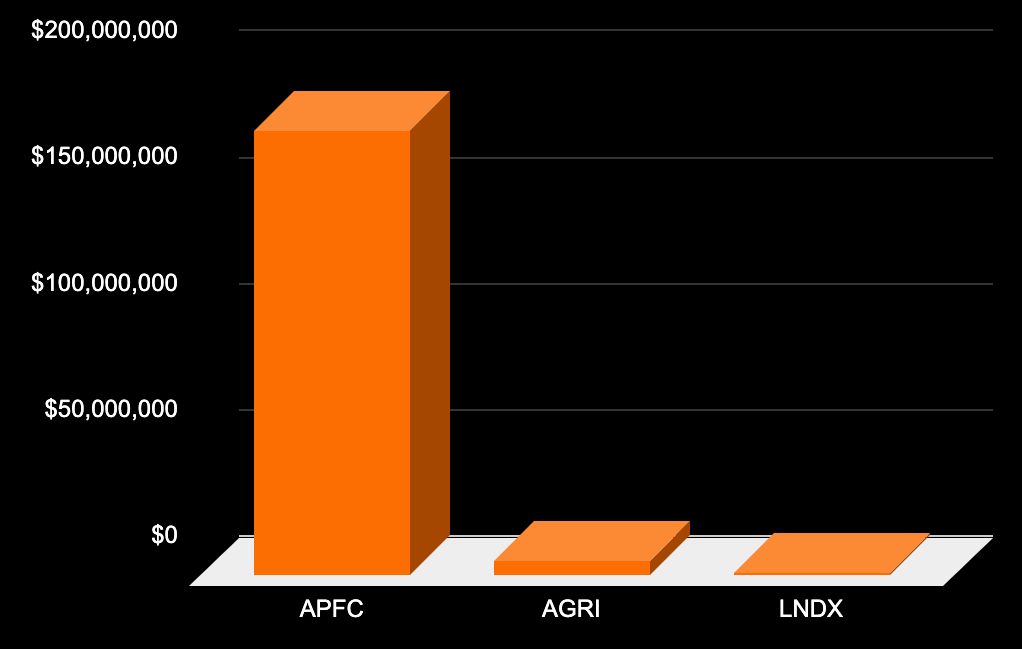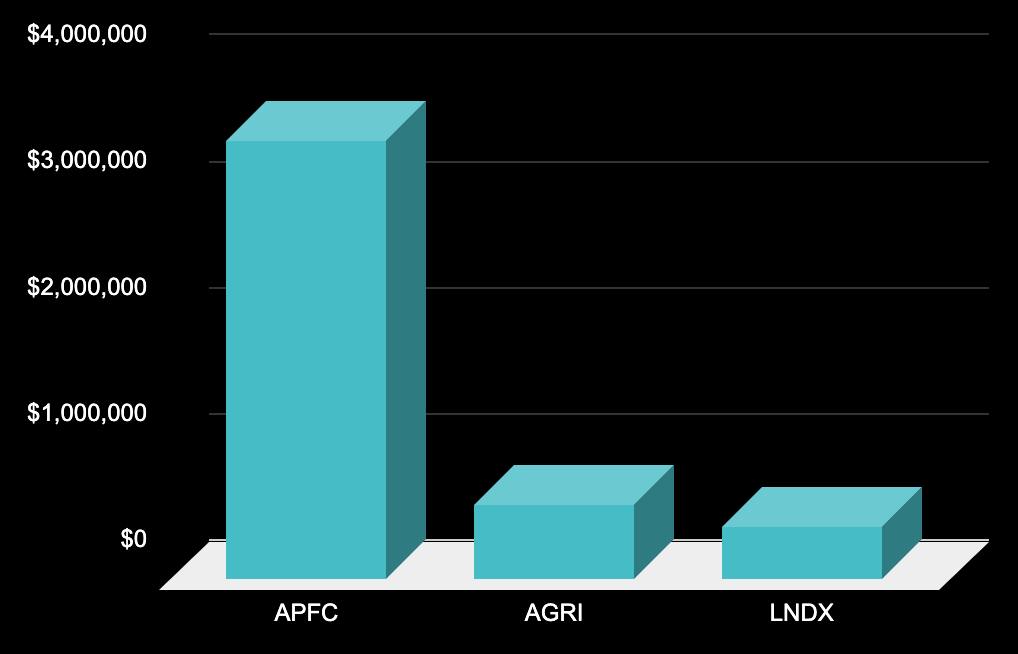Agriculture Leads With APFC in Market Cap While AGRI Leads Supply
APFC dominates the agriculture token market in market cap, trading volume, and stability, while AGRI and LNDX remain speculative.
Key Takeaways and Agriculture Market Implications
APFC is the dominant agriculture token, leading in market cap, trading volume, and price stability. This suggests a strong backing and investor confidence.
AGRI and LNDX remain speculative, with lower market participation but potential for future growth as adoption increases.
Traditional commodities continue to set the benchmark, exhibiting significant price movements influenced by real-world factors like supply chain disruptions, weather patterns, and global trade policies.
Potential investment opportunities exist for those seeking diversification into agriculture-backed tokenization, but liquidity and stability concerns should be considered.
As the tokenized asset market continues to expand, agriculture tokens have emerged as a promising segment, providing investors with exposure to real-world agricultural commodities through blockchain technology.
Foretoken’s latest data visualizations reveal key insights into the performance of notable agriculture tokens APFC, AGRI, and LNDX, as well as their relationship to traditional agricultural commodities like wheat, corn, and soybeans.
Market Cap and Volume Overview
APFC clearly dominates the market, boasting a significantly larger market cap compared to AGRI and LNDX. Moreover, its total volume is the highest, reflecting strong liquidity and investor confidence. In contrast, AGRI and LNDX exhibit much lower market caps and volumes, positioning them as smaller players in the agriculture token sector.
This discrepancy in market cap and volume is due to APFC’s stronger market speculation. Meanwhile, AGRI and LNDX are in earlier adoption phases, with potential for growth if institutional investors or major agricultural stakeholders enter the market.
Price Performance in the Last 24 Hours
APFC maintains a relatively stable price around the $1 mark, with minimal deviation between its 24-hour high and low, suggesting a well-established peg and a stable demand-supply equilibrium.
On the other hand, AGRI and LNDX trade at significantly lower prices and exhibit minor fluctuations in their 24-hour high-low range. These tokens continue to struggle with price stability while their underlying market structures differ from APFC’s.
Market Cap Distribution
By market cap, APFC’s dominance is solidified, revealing its market cap surpassing $150 million, dwarfing both AGRI and LNDX, which remain below the $50 million mark. This signals that APFC has a broader investor base or is backed by more substantial assets compared to its peers.
Supply Metrics Analysis
When looking at supply metrics, AGRI has the largest total supply, nearing 1 billion tokens. This starkly contrasts with APFC, which has a significantly smaller supply, contributing to its higher valuation.
The disparity between total supply and circulating supply for AGRI indicates that a substantial number of tokens remain locked or uncirculated, which could impact liquidity and price stability.
Trading Volume Insights
The total volume visualization highlights APFC’s lead in trading activity, reinforcing its position as the most actively traded agriculture token. LNDX and AGRI lag behind, potentially reflecting lower investor interest or lower adoption rates.
Comparing Agriculture Tokens to Traditional Commodities
Key takeaways:
Wheat has experienced notable price fluctuations year-to-date, peaking around mid-year before a slight decline.
Corn follows a steadier trajectory but has shown an upward trend in recent months.
Soybean prices have remained relatively stable with a slight downtrend.
The agriculture tokens (APFC, LNDX) remain insignificant in comparison to these well-established commodity markets, as indicated by their low relative price points.
As the agriculture tokenization space develops, tracking these trends will be essential for investors looking to balance risk and reward in the tokenized economy.
Stay tuned to Foretoken for further insights into tokenized assets and market developments.










